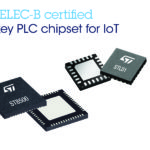by Eric Turner, Elektro-Automatik, USA
The introduction of regenerative electronic loads has dramatically altered the economics of power supply burn-in testing. This article describes how the use of advanced technology, regenerative electronic loads resulted in energy cost reductions exceeding 90 percent. In addition to the lower energy costs, the use of regenerative loads has also resulted in improved factory floor space utilization, reduction in electrical distribution infrastructure, and reduced ambient noise.
Load banks vs. electronic loads
Load banks and electronic loads are commonly utilized in product design and in production testing of power supplies and other power conversion devices, including motor drives and inverters. Load banks, essentially an array of power resistors, are often used to perform product burn-in to root out early failures (infant mortality) as part of the product’s final production testing. Load banks offer an inexpensive hardware solution for product burn-in. Electronic loads, on the other hand, typically employ active circuitry to simulate changing load profiles dynamically. Test profiles are either stored in the unit or uploaded via computer interface so that the test data can be compiled for reporting or archiving purposes. As such, electronic loads, while they can be used for product burn-in, are more commonly used in product development and design verification testing.
Load bank issues
Resistive banks have a number of characteristics that can negatively impact efficiency, ease of use, the quality of the work environment, and expense. The most obvious issue is energy consumption. A typical 110 kW load bank, for instance, will consume well over 110 kW of power in order to provide that function.
High power consumption leads to cooling concerns since the heat from the load must be dealt with. Small load banks might simply require the need for added air conditioning. Most loads are fan cooled, which further increases energy consumption, and which can also add significantly to the ambient noise level. And for load banks that require water cooling, energy costs and significant installation expenses can be incurred. The 110 kW unit shown in Figure 1 is nearly three feet tall, takes up over eight square feet of floor space and produces 65-80 dB of audible noise (roughly the equivalent of New York City traffic noise).

Because of the power consumption and cooling requirements of many load banks, the units can be large, bulky, and sometimes immobile (Figure 2).

Electronic load with regenerative output (ELR)
Regenerative electronic loads (ELRs) dramatically reduce the wasted energy and other problems that load banks create by redirecting the load power back to the utility using an inverter stage, synchronized to the power line input. Figure 3 illustrates how such a closed-loop system operates. Power is applied from the main to the device under test. An electronic load with regenerative output utilizes an internal micro-inverter to return the power to the mains.

The results of the ELR approach are quite remarkable – with total energy consumption being reduced by up to 93 percent. It also has a significant effect on a unit’s size, cooling requirements, and audible noise. Comparing a 120 kW ELR (comprised of 4-30kW rack units) with the 110 kW load bank, the ELR dissipates just 6 kW of heat.
Other benefits of dissipating less heat means smaller cooling fans, which reduce audible noise to whisper-quiet operation. Regenerative loads are also 2-3 times higher power density compared to typical air-cooled loads, which results in less rack or bench space. (Figure 4)

The secret to the implementation of a regenerative load bank is a back-end conversion system. As shown in Figure 5, DC energy flows into a DC-DC converter, which is tied into a DC-AC inverter (current source), and which then synchronizes with the distribution grid to recycle the energy. This technology is similar to grid-tied photovoltaic inverters (PVs).

Power supply burn-in case study
A major DC power supply manufacturer was utilizing resistive load banks to conduct burn-in testing of the company’s Industrial Critical DC Power Supplies. At each burn-in station, nine DC supplies were each operated with a 1.38 kW DC load, consuming 12.5 kWh (42,500 BTU) per hour over an 80-hour continuous burn-in cycle (Figure 6). The burn-in floor hosts 24 stations amounting to 300 kW per hour of energy usage and over 1 million BTU’s of heat – per hour!

The resistive loads in the facility were replaced by an array of 24, 15 kW electronic regenerative loads (ELR), each housed in a 3U rack-mount chassis. The resultant reduction on energy costs are summarized in Figure 7.

The basic energy savings, as depicted in Figure 7, shows a yearly reduction in the utility bill of nearly $7,500 – per station. The payback on the investment in the ELRs is slightly over two years.
Other operational cost considerations and benefits
- Reduced operational cost and maintenance of the facility HVAC system
- Energy consumption reduction estimated at $18,000 per year.
- Maintenance costs reduction estimated at $5,600 per year
- A regenerative load solution fits into the existing ATE racks, freeing up over 17 ft2 per station for a total of 416 ft2 once occupied by resistive load banks
- Test setup is simplified since all test equipment was within the ATE rack, saving approximately $600/station.
- Potentially reduced infrastructure cost associated with production line HVAC expansion.
- 30-40 percent less audible noise.
- Better working environment leads to happier operators.
Conclusion
Electronic regenerative loads provide a substantial reduction in electrical and infrastructure costs when compared with resistive load banks. In this case study, the combination of direct energy costs plus savings due to HVAC load reduction, better utilization of factory floor space, and a healthier work environment make ELRs a sound investment. Moreover, ELRs offer exceptionally versatile load profile programming and ease of set-up, making them an exceptional value on a range of dynamic testing applications.




Leave a Reply